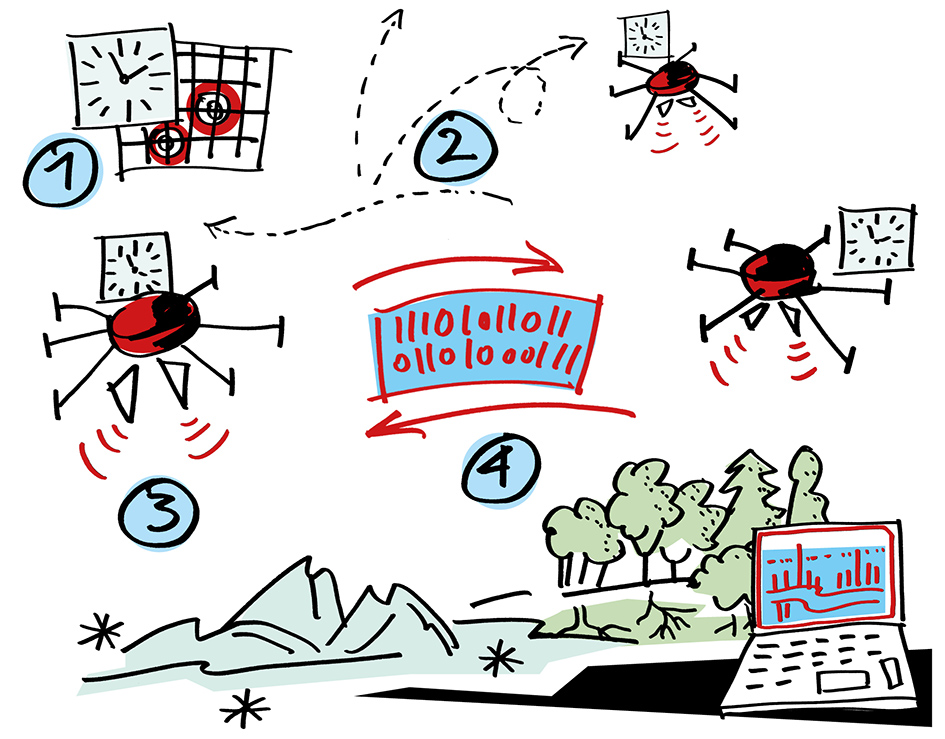KoRaTo — Cooperative aperture synthesis for tomographic radar imaging
The Research Training Group "Kooperative Apertursynthese für Radar-Tomographie“ (KoRaTo, engl: Cooperative aperture synthesis for tomographic radar imaging) is a joint project between the Ulm University (UUlm) and the Friedrich-Alexander-University (FAU) Erlangen-Nuremberg under the direction of Prof. Christian Waldschmidt, Institute of Microwave Engineering, Ulm University.
It aims at developing a new UAV- and radar-based geophysical monitoring system to measure for instance earth mass movements, vegetation heights, or the cryosphere. While in the past geophysical monitoring systems required ground vehicles, aircrafts, or satellites, KoRaTo breaks new grounds in using cooperative UAV swarms to synthesize a common high-resolution 3D-tomographic image of the environment. Through this, observations and explorations of so far rough or inaccessible terrain becomes possible and allows to look through ice layers or into hidden structures beneath the ground surface. This allows, for instance, to explore the stability of hillsides in order to monitor the avalanche danger. High resolution radar imaging is achieved by using small sub-radars carried by the UAVs that move in a swarm and together form a distributed sensor network that allows to carry out cooperative 3D measurements.
The challenges of the project encompass the synthesis of the cooperative measurements into a common 3D image, coordination and trajectory optimization of the swarm to achieve a common multistatic aperture, or the efficient storage and processing of the huge amounts of data. To achieve this goal, the KoRaTo project brings together researchers with different expertises such as microwave, remote sensing, and communication engineering.
Research priorities:
- Coherency: Methods to spatially and temporally couple the non-coherent sub-radar apertures on different UAVs so that coherent, multistatic radar measurements for tomography and interferometry can be carried out
- Mission Planning: Optimized time-variant apertures, which are spanned by the movement of several UAVs, as well as jointly optimized trajectories of the movements
- Imaging: Methods for tomographic imaging in non-homogeneous media, made possible by the cooperative spatial aperture synthesis
- Acquisition: Concepts for data storage, transmission and processing based on compressed sensing methods and resource optimization for the sensor data of the cooperative aperture synthesis



